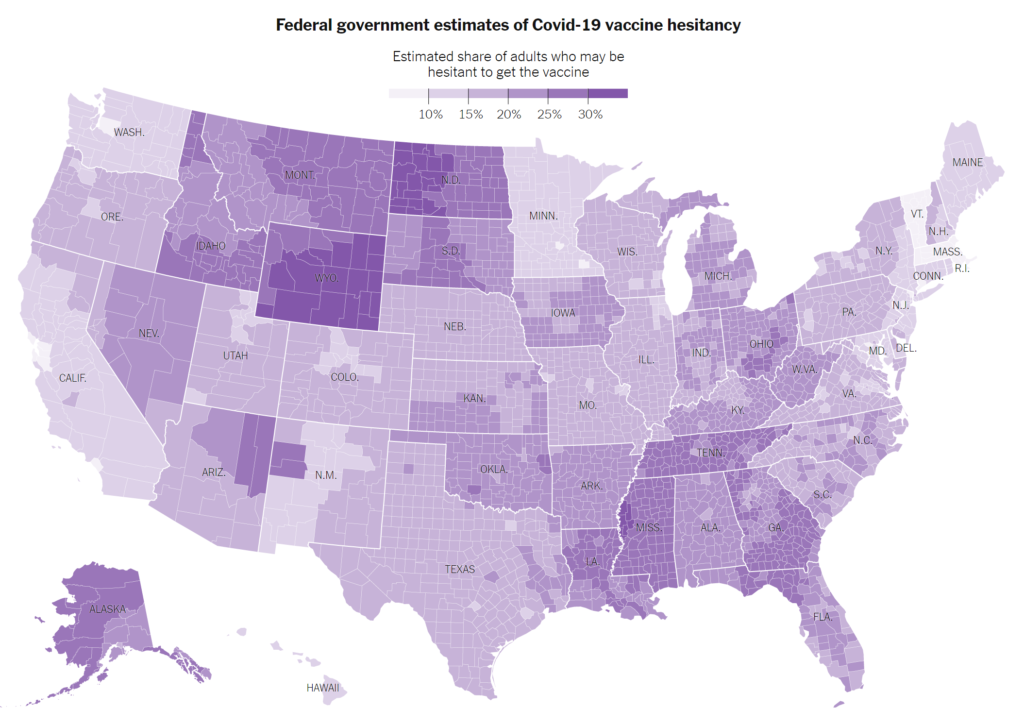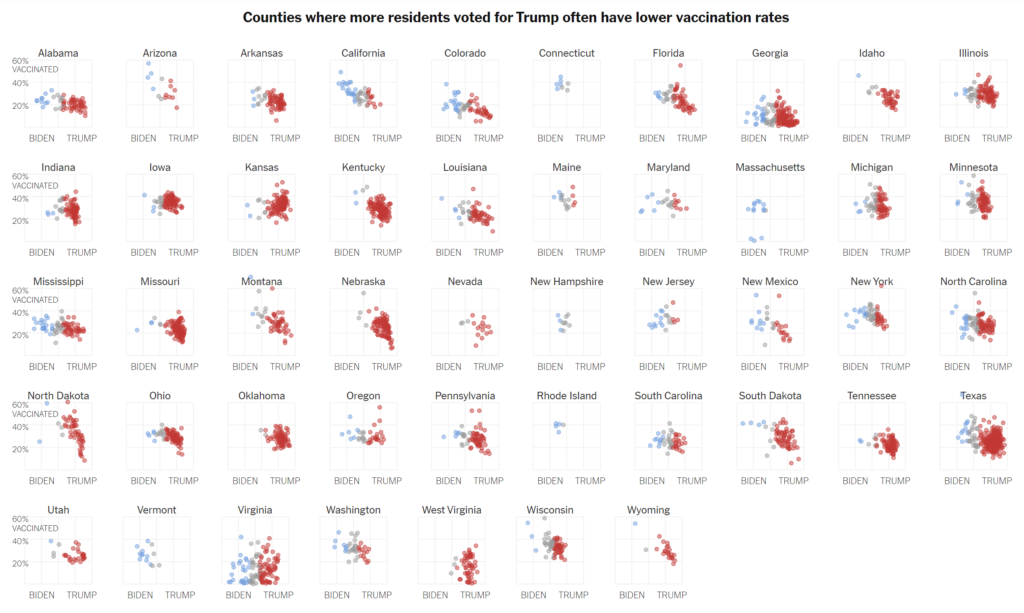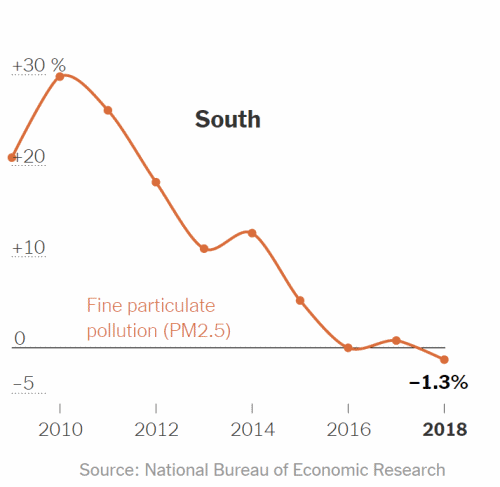Least vaccinated U.S. counties have something in common: Trump voters – “It’s terrifying to think that this may never end. So much hinges on these vaccinations”

By Danielle Ivory, Lauren Leatherby, and Robert Gebeloff
17 April 2021
(The New York Times) – About 31 percent of adults in the United States have now been fully vaccinated. Scientists have estimated that 70 to 90 percent of the total population must acquire resistance to the virus to reach herd immunity. But in hundreds of counties around the country, vaccination rates are low, with some even languishing in the teens.
The disparity in vaccination rates has so far mainly broken down along political lines. The New York Times examined survey and vaccine administration data for nearly every U.S. county and found that both willingness to receive a vaccine and actual vaccination rates to date were lower, on average, in counties where a majority of residents voted to re-elect former President Donald J. Trump in 2020. The phenomenon has left some places with a shortage of supply and others with a glut.
For months, health officials across the United States have been racing to inoculate people as variants of the coronavirus have continued to gain a foothold, carrying mutations that can make infections more contagious and, in some cases, deadlier. Vaccinations have sped up and, in many places, people are still unable to book appointments because of high demand. In Michigan, where cases have spiraled out of control, Gov. Gretchen Whitmer, a Democrat, recently urged President Biden to send additional doses.
But in more rural — and more Republican — areas, health officials said that supply is far exceeding demand.
In a county in Wyoming, a local health official asked the state to stop sending first doses of the vaccine because the freezer was already stuffed to capacity with unwanted vials.
In an Iowa county, a clinic called people who had volunteered to give shots to tell them not to come in because so few residents had signed up for appointments.

In a county in Pennsylvania, a hospital set up a drive-through in the park, stocked with roughly 1,000 vaccine doses. Only about 300 people showed up.
And in interviews with more than two dozen state and county health officials — including some who said they were feeling weary after a year of hearing lifelong friends, family and neighbors tell them that the virus was a hoax or not particularly serious — most attributed low vaccination rates at least partly to hesitant conservative populations.
“I just never in a million years ever expected my field of work to become less medical and more political,” said Hailey Bloom, a registered Republican and the public information officer for the health department that covers Natrona County, Wyo., which Mr. Trump won by a wide margin last year.
The health department, Ms. Bloom said, set up a clinic in a former Macy’s at the local mall and was prepared to give 1,500 shots a day, four days a week. But it has never been able to fill all the slots, she said; usually, 300 or 400 people show up.
Ms. Bloom, like many other county officials, said she feared that reaching herd immunity might not be possible in her community. “It’s terrifying to think that this may never end,” she said. “So much hinges on these vaccinations.” [more]
Least Vaccinated U.S. Counties Have Something in Common: Trump Voters


